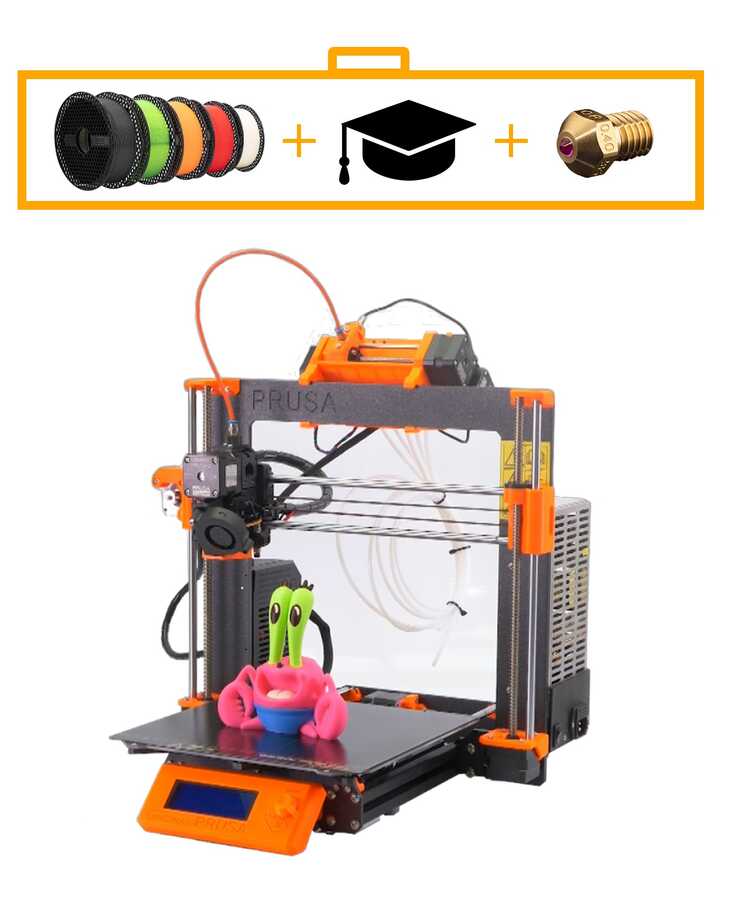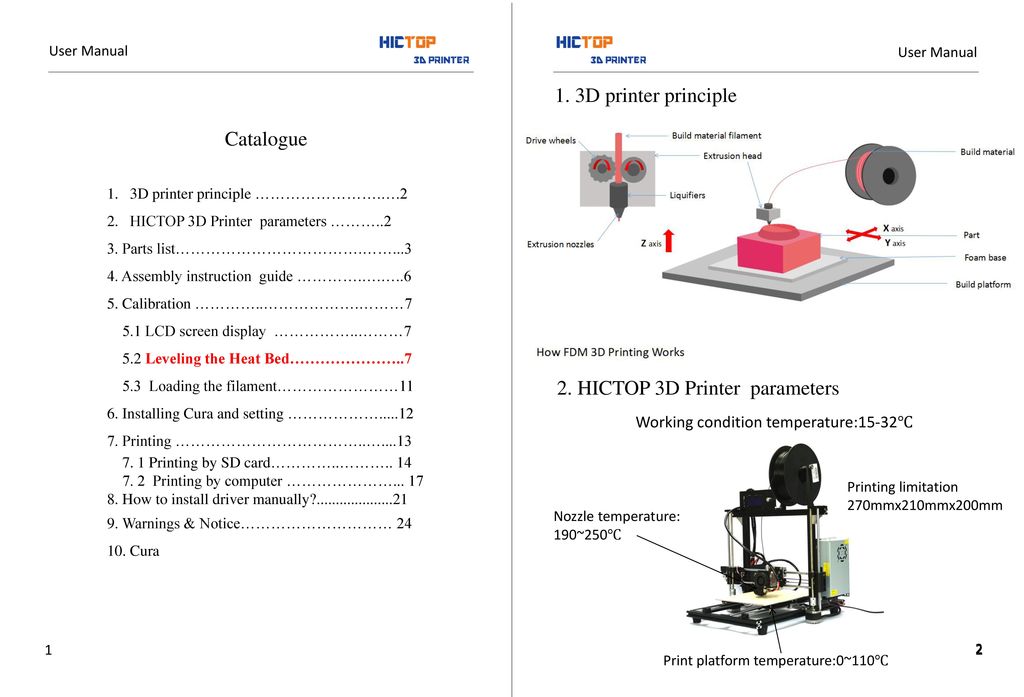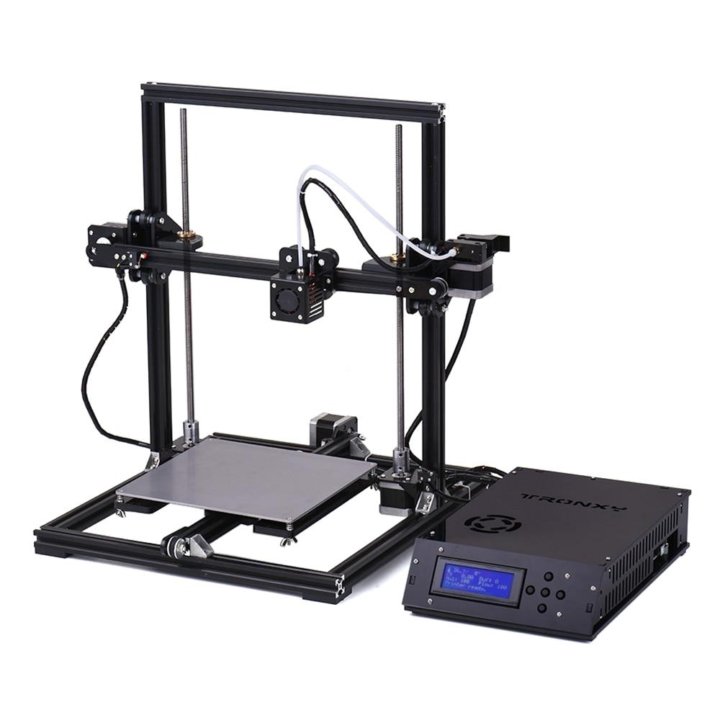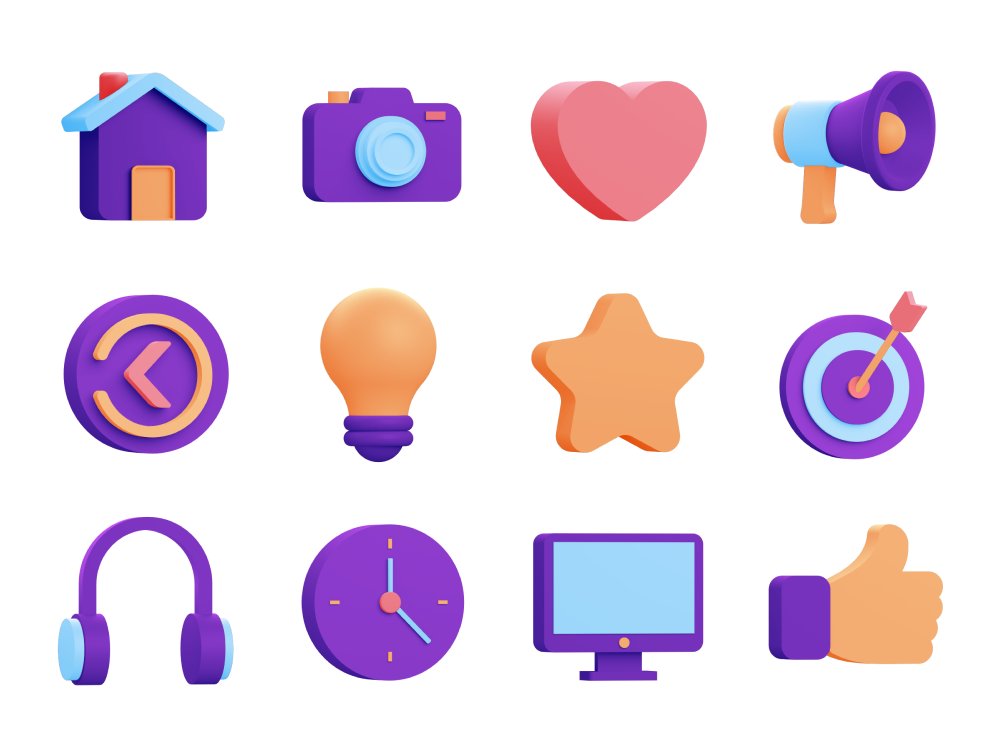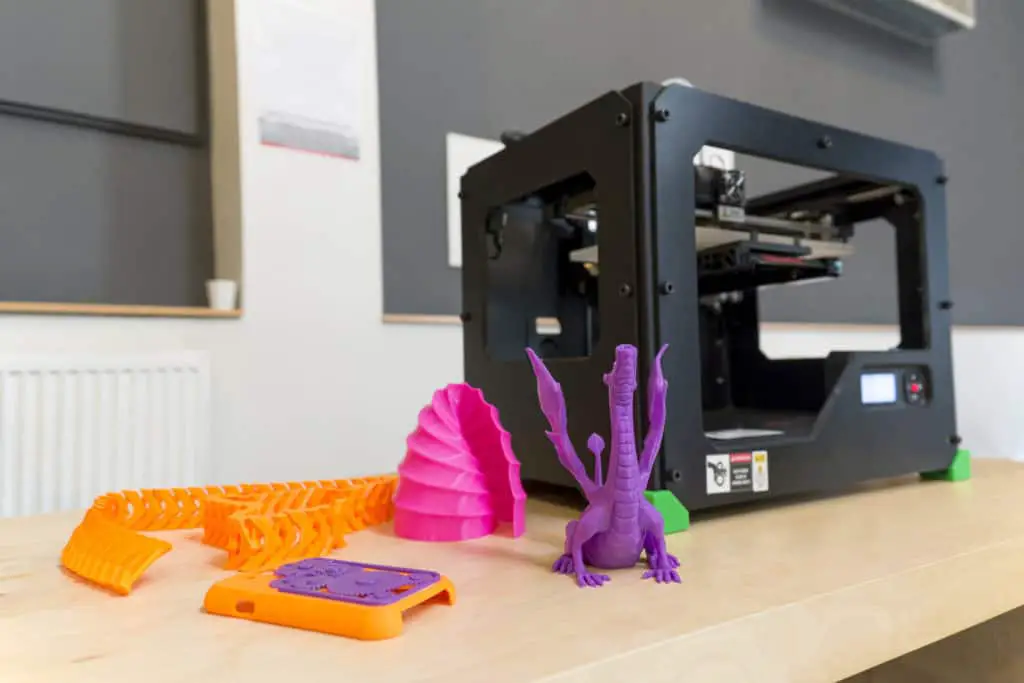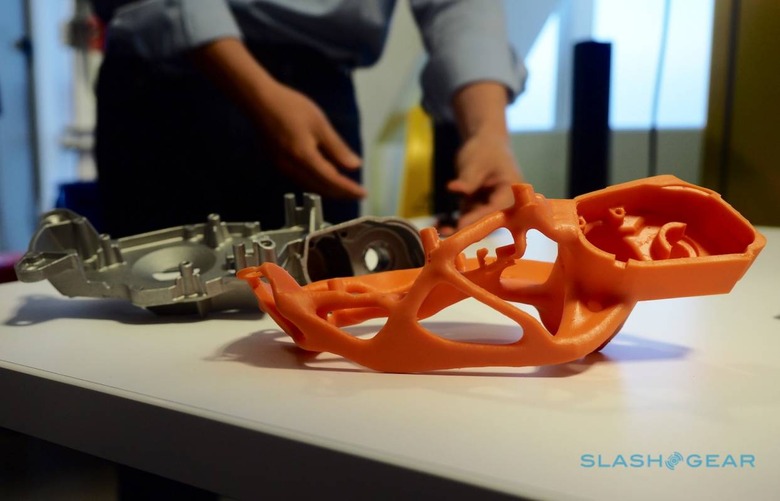Best full color 3d printer
The 6 best full-color 3D printers in 2022
What is the best full-color 3D printer?
It’s complex to 3D print in full, photorealistic color, and there are less than ten 3D printer manufacturers that achieve this.
Until recently, full-color 3D printing was exclusive to expensive industrial additive manufacturing systems from brands such as Stratasys or 3D Systems. Today, more affordable (under $10K) desktop full-color 3D printers also exist.
What is full-color 3D printing?
Full-color 3D printers are able to create objects with photorealistic color.
To do so, the 3D printer must be able to mix different filaments or inks together to obtain precise shades and gradients, similar to regular 2D paper printers.
This is also known as indirect color 3D printing, as the color is applied to the base material (the base material isn’t pre-colored before 3D printing).
Full-color 3D printing vs. multicolor 3D printing
In the 3D printing industry, the term “multicolor” is sometimes used as a synonym for full-color.
However, for clarity in this article, we will only refer to multicolor for 3D printers and accessories that are able to 3D print a few colors (e.g.: 2-color 3D printers, 3-color 3D printers, Prusa multi-material add-on, Mosaic Palette, etc.).
This type of 3D printing is also called direct color 3D printing, as the filament already has a specific color before being 3D printed.
Examples of full-color 3D prints (left) and multicolor 3D prints (right).The best full-color 3D printers
| Brand | Product | Build size | Country | Price Approximate starting prices based on supplier-provided information and public data. Prices may vary by region, over time and do not include additional products or services (taxes, shipping, accessories, training, installation, …). | |
|---|---|---|---|---|---|
| ComeTrue | T10 | 200 × 160 × 150 mm7.87 × 6.3 × 5.91 in | Taiwan | $ 30,00030 495 €26,611 £4,471,680 ¥ | Quote |
| XYZprinting | PartPro350 xBC | 350 × 222 × 200 mm13.78 × 8.74 × 7.87 in | Taiwan | $ 30,00016 690 €26,611 £4,471,680 ¥ | Quote |
| Mimaki | 3DUJ-2207 | 203 × 203 × 76 mm7.99 × 7.99 × 2.99 in | Japan | $ 39,00035 000 €34,595 £5,813,184 ¥ | Quote |
| Stratasys | J55 Prime | – | United States | $ 99,00095 000 €87,817 £14,756,544 ¥ | Quote |
| Mimaki | 3DUJ-553 | 508 × 508 × 305 mm20 × 20 × 12.01 in | Japan | $ 230,000200 000 €204,019 £34,282,880 ¥ | Quote |
| 3D Systems This brand is a certified partner from our network. | ProJet CJP 660Pro | 254 × 381 × 203 mm10 × 15 × 7.99 in | United States | upon request | Quote |
Expand to see more specs
The products in the table are ranked by price (low to high).
| Brand | Product | Technology | Build size | Country | Price Approximate starting prices based on supplier-provided information and public data. Prices may vary by region, over time and do not include additional products or services (taxes, shipping, accessories, training, installation, …). | |
|---|---|---|---|---|---|---|
| ComeTrue | T10 | Binder Jetting | 200 × 160 × 150 mm7.87 × 6.3 × 5.91 in | Taiwan | $ 30,00030 495 €26,611 £4,471,680 ¥ | Get a quote |
| XYZprinting | PartPro350 xBC | Binder Jetting | 350 × 222 × 200 mm13.78 × 8.74 × 7.87 in | Taiwan | $ 30,00016 690 €26,611 £4,471,680 ¥ | Get a quote |
| Mimaki | 3DUJ-2207 | Material Jetting | 203 × 203 × 76 mm7.99 × 7.99 × 2.99 in | Japan | $ 39,00035 000 €34,595 £5,813,184 ¥ | Get a quote |
| Stratasys | J55 Prime | Material Jetting | – | United States | $ 99,00095 000 €87,817 £14,756,544 ¥ | Get a quote |
| Mimaki | 3DUJ-553 | Material Jetting | 508 × 508 × 305 mm20 × 20 × 12.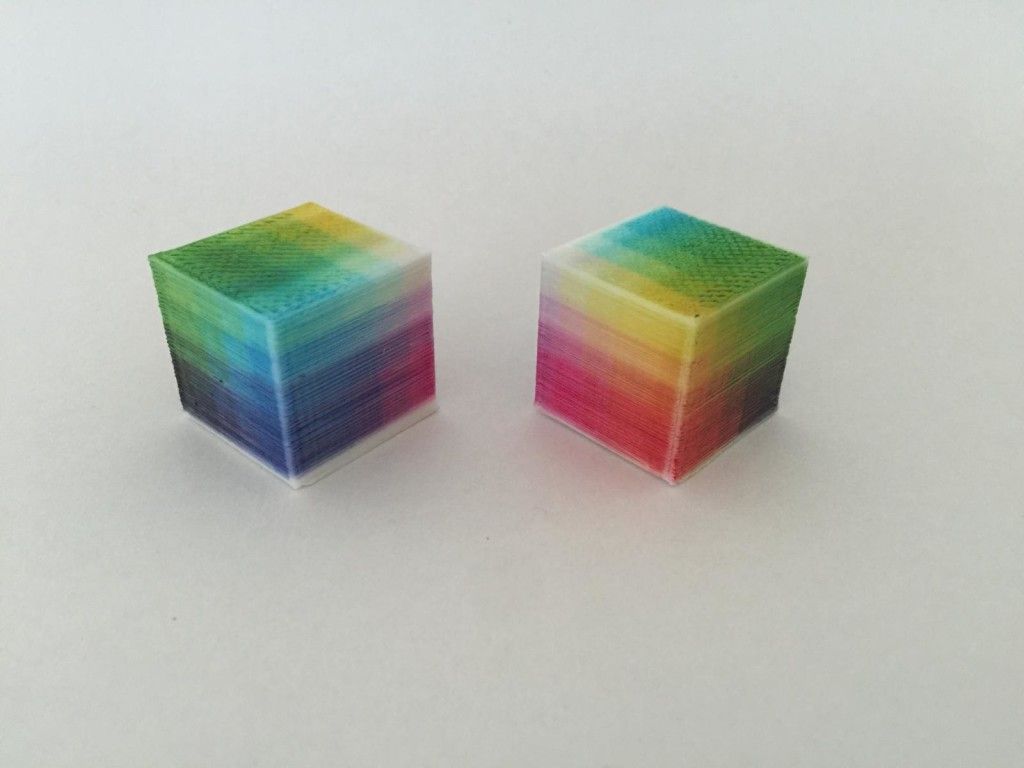 01 in 01 in | Japan | $ 230,000200 000 €204,019 £34,282,880 ¥ | Get a quote |
| 3D Systems This brand is a certified partner from our network. | ProJet CJP 660Pro | Binder Jetting | 254 × 381 × 203 mm10 × 15 × 7.99 in | United States | upon request | Get a quote |
Overview of the best full-color 3D printers in 2022
The ComeTrue T10 full-color 3D printer uses sandstone– a neutral, plaster-like powder– as its base material. This material is solidified and colored with ComeTrue’s proprietary liquid binding agent.
Then, users must insert the parts into a dry vacuum unit (available separately) to manually remove excess powder with an airbrush. The final steps involve covering the part in a liquid infiltrant for it to harden and then leaving the part to dry.
Contact manufacturer Get a quote Add to comparison
Targeting professionals such as architects and designers, the PartPro350 xBC 3D prints, colors, and cures materials all at once.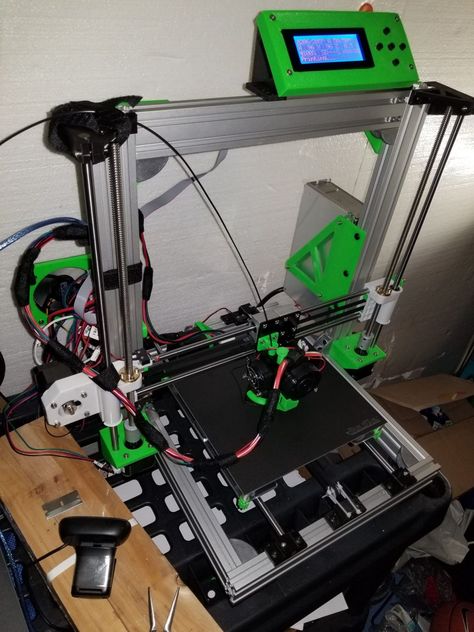
This full-color 3D printer features a removable build tray, enabling users to quickly launch a new print job before taking out freshly 3D printed parts from the previous tray.
Contact manufacturer Get a quote Add to comparison
The 3DUJ-2207 is an affordable full color 3D printer produced by Mimaki. Mimaki is a 3D printer manufacturer based in Japan. This 3D printer offers a build volume of 203 x 203 x 76 mm.
Contact manufacturer Get a quote Add to comparison
The Stratasys J55 Prime is a full-color 3D printer for professionals. Stratasys is a worldwide 3D printer manufacturer based in the United States.
This color 3D printer can print over 1,900 PANTONE colors.
Contact manufacturer Get a quote Add to comparison
Mimaki is a professional inkjet printing solution manufacturer from Japan. The 3DUJ-553 is their first 3D printer, and it produces high-quality, photo-realistic 3D prints.
To do so, its ink heads deposit a layer of colored ink, which the printheads then coat with UV-sensitive material to harden the layer with LED lighting. According to the manufacturer, this full-color 3D printer offers over 10 million colors.
According to the manufacturer, this full-color 3D printer offers over 10 million colors.
Contact manufacturer Get a quote Add to comparison
This full-color sandstone 3D printer by 3D Systems produces high-quality parts. The ProJet CJP 660Pro deposits liquid color binding agent (proprietary VisiJet PXL) through its 1,520 jets in a process called ColorJet Printing.
Different infiltrants are available from 3D Systems for varying color 3D printed part properties: ColorBond, StrengthMax, and Wax.
Contact manufacturer Get a quote Add to comparison
Other full-color 3D printers
Below are a few mentions of products that are unavailable, discontinued, or suspicious.
M3D Crane Quad
The Crane Quad is a $999 desktop 3D printer that is advertised by M3D as capable of printing full-color objects with its four-in-one-out extruder. However, it has been brought to our attention that some users have never received the machine, while many others have encountered serious issues with it.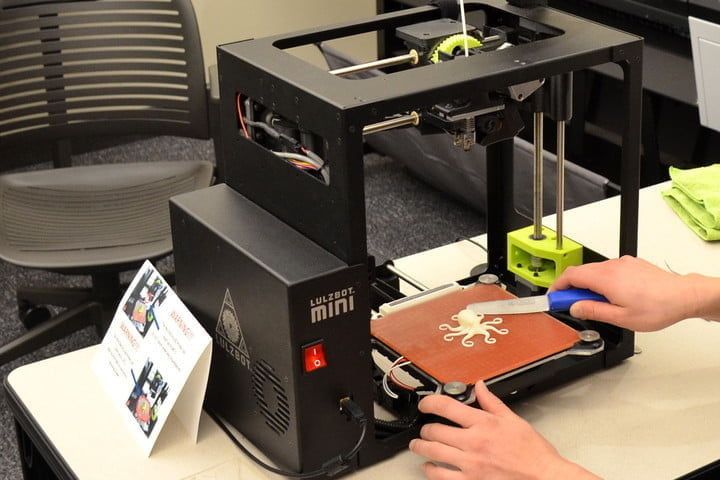 A recap of user complaints and types of issues can be found in this BBB report. We don’t recommend this company.
A recap of user complaints and types of issues can be found in this BBB report. We don’t recommend this company.
Mcor ARKePro
Mcor debuted with the Mcor IRIS and Matrix 300+ and then launched the Mcor ARKePro full-color desktop 3D printers for professionals (an updated version of the original Mcor ARKe). The ARKe used Selective Deposition Lamination (SDL) technology, which consists of depositing colored ink on sheets of paper. Mcor is no longer active.
SOMETHING 3D Chameleon
This 3D printer was announced by Israel-based SOMETHING 3D (ST3D) in 2017. The Chameleon mixes five colors together (WCMYK) to create full-color 3D prints.
ORD Solutions RoVa4D full-color Blender
The RoVa4D full-color Blender is another filament-mixing 3D printer. Canadian company ORD Solutions launched this full-color desktop 3D printer on Kickstarter in 2016, but there has been very little news about its availability since then.
Apple full-color 3D printer
There were rumors of the tech giant developing a full-color desktop 3D printer. Apple filed a patent in 2015, which was approved at the beginning of 2018. However, the project appears to be on standby as no official Apple announcements regarding 3D printing have been made.
Ilios Ray
Ilios was a 3D printer manufacturer from Cyprus that closed its doors in late 2016. Their Ilios Ray resin 3D printer was claimed to mix colors with different resin cartridges.
SKY-TECH 3DPandoras
Launched on Kickstarter in 2014, this full-color powder 3D printer was well-received by the community– at first. Since then, its backers have largely denounced this product as a scam.
Multicolor 3D printing: alternatives to full-color 3D printing
As mentioned at the beginning of the article, multi-color 3D printing is different from full-color 3D printing. Multi-filament 3D printers, such as dual extruder 3D printers, are able to 3D print different colors at the same time. These multi-nozzle 3D printers can be considered multi-color, but not full-color.
Multi-filament 3D printers, such as dual extruder 3D printers, are able to 3D print different colors at the same time. These multi-nozzle 3D printers can be considered multi-color, but not full-color.
Accessories such as the Mosaic Palette or the Prusa multi-material add-on also allow for multicolor 3D printing with simple single-extruder 3D printers. They enable users to 3D print with up to four or five colors.
With SimplyColor3D software, it’s also possible to program filament color changes. The software also allows users to paint 3D models and allows for less material waste during purge transitions.
Another solution is post-processing. Germany-based DyeMansion provides full-color post-processing solutions (“DyeMansion RAL color palette”) for powder-based 3D printed parts. See our post on multicolor 3D printers and multi-filament accessories for more information.
A multicolor Benchy 3D printed with the Mosaic Palette 2. Source: Mosaic
Source: MosaicBenefits of full-color 3D printing and applications
Full-color 3D printers allow users to obtain photorealistic 3D models with limited post-processing required. This is useful for rapid prototyping as well as for the manufacturing of end-use products:
- Realistic prototypes (e.g. packaging, architecture models)
- Customized consumer products (e.g. phone cases, figurines, toys)
- Educational items (e.g. medical models)
Full-color 3D printing service
Full-color 3D printers are quite expensive and they require users to have at least some 3D printing knowledge.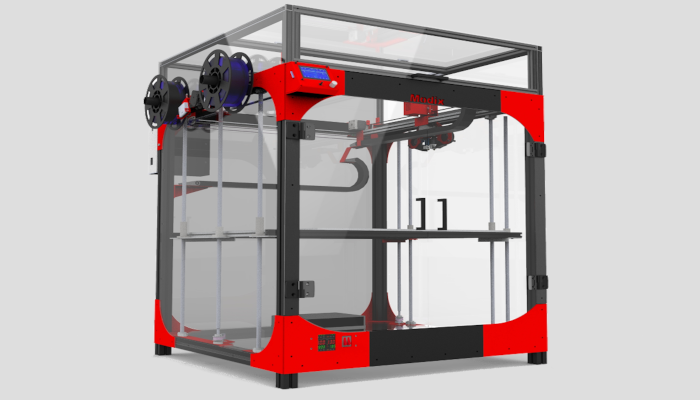 If users only need to 3D print a few parts a year, then ordering online service bureaus can be more cost-effective. Here’s a list of a few trusted online full-color 3D printing services:
If users only need to 3D print a few parts a year, then ordering online service bureaus can be more cost-effective. Here’s a list of a few trusted online full-color 3D printing services:
- 3D Hubs
- i.materialise
- Sculpteo
- Shapeways
- WhiteClouds
How much does a full-color 3D printer cost?
The price of a full-color 3D printer can range from $550 to over $250,000. It depends on the type of 3D printing technology that the 3D printer uses. Full-color extrusion 3D printers cost less, while complex binder jetting and material jetting are the most expensive.
Find the right full-color 3D printer for sale
The Top Full Color 3D Printers on the Market
Published on December 2, 2021 by Carlota V.
When it comes to choice of a 3D printer, several criteria must be taken into account: which applications it will be used for, the desired printing speed, the final quality of the parts, the quantity to be produced, among others. For some, a particularly essential aspect is the possibility to design parts in color. It is true that color integration is rarely the number one choice, but for some users, it is key. For example when creating a visual prototype that must look like a perfume bottle, or an anatomical model where blood vessels need to be distinguished from nerves and arteries. Enter full color 3D printers.
For some, a particularly essential aspect is the possibility to design parts in color. It is true that color integration is rarely the number one choice, but for some users, it is key. For example when creating a visual prototype that must look like a perfume bottle, or an anatomical model where blood vessels need to be distinguished from nerves and arteries. Enter full color 3D printers.
Integrating color into additive manufacturing is currently possible, whether through machines that are capable of offering a wide range of colors, accessories to be added to the printers, or post-processing solutions that offer options for dyeing, painting, varnishing, etc. In this listing, we focus on color 3D printers, i.e. machines that can produce a multi-color part at the end of the printing process. We have sorted them by printing process: extrusion, material jetting and powder binding.
Fused Deposition Modeling
FDM technology offers several possibilities for creating coloured parts. For some color 3D printers, the presence of several extruders will allow the user to choose different filaments and combine them. Other manufacturers have developed a system that can color filaments directly inside the 3D printer: the machine releases color inks at the print head, resulting in a colored filament. Finally, there exist additional accessories available to mix different filaments together.
For some color 3D printers, the presence of several extruders will allow the user to choose different filaments and combine them. Other manufacturers have developed a system that can color filaments directly inside the 3D printer: the machine releases color inks at the print head, resulting in a colored filament. Finally, there exist additional accessories available to mix different filaments together.
Crane Quad
Known for launching the Micro 3D, a successful desktop 3D printer on Kickstarter in 2014, M3D continued to develop various FDM/FFF machines. Among its latest creations, the Crane Quad, a 3D printer capable of combining several filaments to create new combinations of colors or hybrid materials. In fact, the Crane Quad mixes 4 CMYK filaments to achieve more than 50,000 different colors. In addition, it offers a maximum manufacturing volume of 230 x 230 x 250 mm for a minimum layer height of 25 microns. It is marketed by M3D at a price of $999. You can find more information HERE.
da Vinci Color 3D printer and its mini
The da Vinci Color 3D printer combines FDM and Inkjet technologies, as it uses an absorbent, colorless PLA filament that can be mixed with different color inks. According to the manufacturer, CMYK ink cartridges can be used in an almost unlimited color gamut, up to 16 million shades. It has a print volume of 200 x 200 x 150 mm for a maximum print speed of 180 mm/s. In addition, XYZprinting also has a more compact version, the da Vinci Color Mini, with a smaller print volume of 130 x 130 x 130 x 130 mm. Features of this latest version include automatic calibration, wireless connectivity to connect to the printer remotely, and an optional laser engraving module for further customization of projects.
Element from Mosaic Manufacturing
The Element 3D printer was launched by the Canadian company Mosaïc Manufacturing. This professional machine makes it possible to achieve complex prints with different materials while obtaining realistic full-color and functional prints by combining flexible and rigid materials. It has a printing plate that reaches 120°C and a layer resolution of between 20 and 230 microns. With a maximum printing volume of 355 x 355 x 355 mm, the Element 3D printer has an all-metal gantry and a precision motion system. Other features include an internal camera for viewing the print, a touch screen control and connectivity via Wifi, LAN or USB. It is compatible with the Canva laminator, with which you can easily create, cut and manage any 3D printing project.
It has a printing plate that reaches 120°C and a layer resolution of between 20 and 230 microns. With a maximum printing volume of 355 x 355 x 355 mm, the Element 3D printer has an all-metal gantry and a precision motion system. Other features include an internal camera for viewing the print, a touch screen control and connectivity via Wifi, LAN or USB. It is compatible with the Canva laminator, with which you can easily create, cut and manage any 3D printing project.
Palette 3
While the Palette 3 is not a 3D printer, it is probably one of the most accessible ways to design color parts. Developed by the Canadian company Mosaic Manufacturing, the machine should be connected to an extrusion 3D printer. It allows the combination of flexible and rigid materials, and users can not only create parts with complex shapes but also print in color in one go. A Pro version of the Palette 3 is also available, with advanced properties that allow users to print with technical materials and create durable, high-volume prints.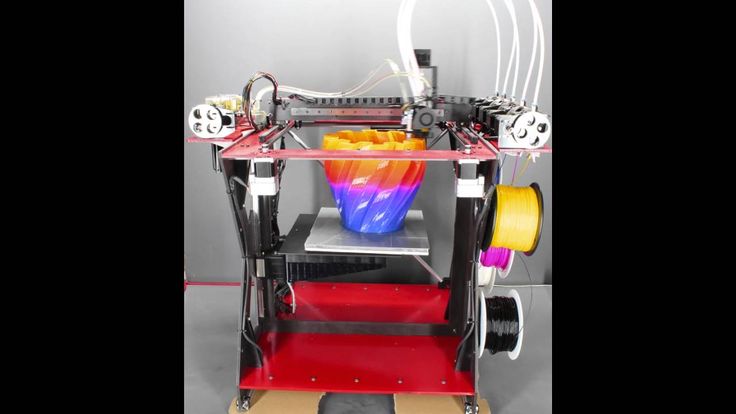 Finally, the Palette 3 Pro features Splice Core Pro, a cooling system that makes filament bonding more reliable. The Palette 3 is available from €650 and the Palette 3 Pro from €850.
Finally, the Palette 3 Pro features Splice Core Pro, a cooling system that makes filament bonding more reliable. The Palette 3 is available from €650 and the Palette 3 Pro from €850.
RoVa4D
The RoVa4D 3D printer grew out of a successful Kickstarter campaign by Canadian company ORD Solutions, which after its first Kickstarter campaign has dedicated itself to improving the capabilities of its 3D printer. This latest version supports 5 spools and a print head that allows printing with different materials and colors, from flexible materials to soluble materials. It has a printing volume of 120 x 120 x 180 mm. In order to be able to successfully achieve color printing, the machine has 5 different spools for CMYK colours (cyan, magenta, yellow, black and white), which are then mixed within the patented hotend to give the expected color as a result.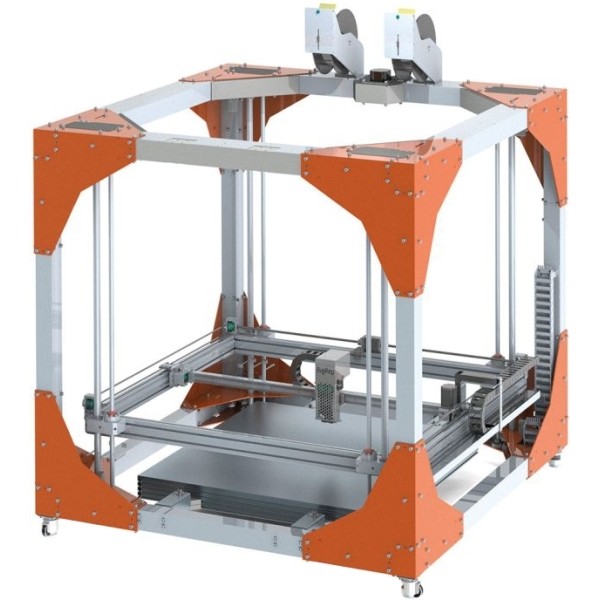 The printer can currently be purchased at the manufacturer’s website for $7,500. You can find more information HERE.
The printer can currently be purchased at the manufacturer’s website for $7,500. You can find more information HERE.
XRIZE
The XRIZE is an industrial 3D printer that uses a hybrid process called Augmented Deposition to produce objects in multiple colors. This hybrid process combines extrusion-based 3D printing with a inkjet technology we know from 2D printers. While the part is created layer by layer with traditional colorless PLA, the 3D printer simultaneously releases CMYK inks (cyan, magenta, yellow, black) in the print head to add color. For example, text, images and QR codes can be printed on the part. Although the device can be described as a desktop machine, its build volume being 310 x 200 x 200 mm, the XRIZE with a price of $55,000 is less suitable for manufacturers and hobbyists but rather for industrial applications. You can find more information HERE.
Material Jetting
3DUJ-553 and 3DUJ-2207 from Mimaki
Japan’s Mimaki, a manufacturer of traditional 2D printers, was the first to make a UV-curable, colored material jet 3D printer. Its 3DUJ-553 solution was launched in 2017 and can create parts with more than 10 million colors. It uses a UV light curing process and is intended for the professional sector. During this process, a layer of material is applied and then covered with a UV-sensitive ink that light can solidify. The process is repeated until the final part is obtained.
Its 3DUJ-553 solution was launched in 2017 and can create parts with more than 10 million colors. It uses a UV light curing process and is intended for the professional sector. During this process, a layer of material is applied and then covered with a UV-sensitive ink that light can solidify. The process is repeated until the final part is obtained.
More recently, Mimaki developed the 3DUJ-2207, a more compact 3D printer that offers the same color printing capabilities. It is more accessible and easier to use, unlocking a larger section of the current market. The 3DUJ-2207 is particularly suited to medical professionals, researchers and teachers, but also to designers and artists.
ActiveLab Digital Fabrication by Voxel8
The ActiveLab Digital Manufacturing System from Voxel8, acquired earlier this year by Kornit Digital, is another multi-material 3D printing solution using a technology based on material jetting. Its ActiveMix® technology consists of three possible elements, ActiveMix Extrusion, ActiveMix Spray and ActiveImage.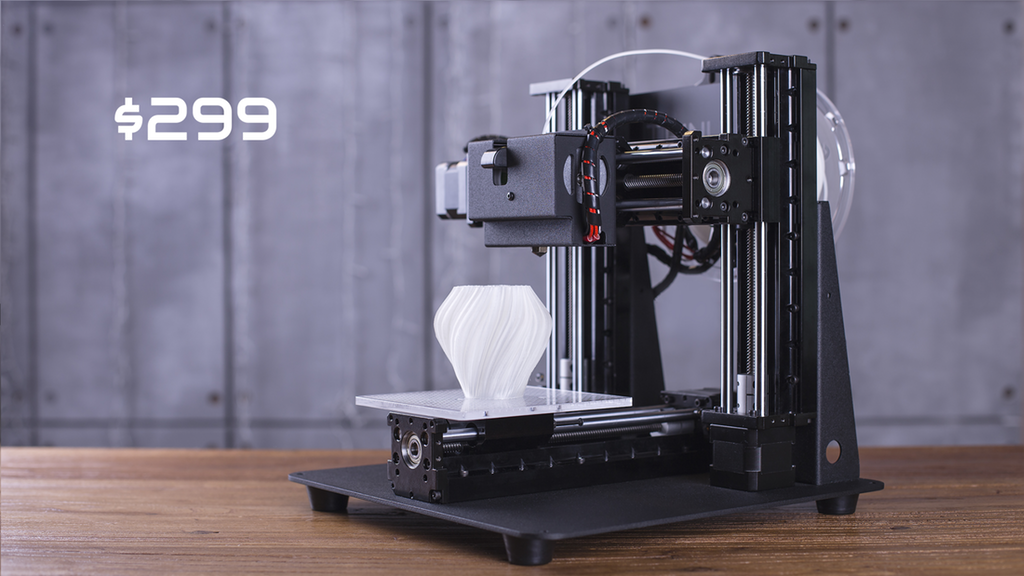 The extrusion works to build 3D structures and thick films on any surface or texture with theologically tuned fluids while the spray rapidly covers large areas of a substrate with an elastomeric spray for textiles. Finally, the ActiveImage uses inkjet technology either through spray or extrusion, or both, to embed high-resolution graphics into elastomers. Users can expect full color graphics and the company points to its use especially in the creation of sporting goods, though it also has industrial and medical applications. You can find out more HERE.
The extrusion works to build 3D structures and thick films on any surface or texture with theologically tuned fluids while the spray rapidly covers large areas of a substrate with an elastomeric spray for textiles. Finally, the ActiveImage uses inkjet technology either through spray or extrusion, or both, to embed high-resolution graphics into elastomers. Users can expect full color graphics and the company points to its use especially in the creation of sporting goods, though it also has industrial and medical applications. You can find out more HERE.
Photo Credits: Voxel8
J55 Prime
One of the most well-known names in the world of full color 3D printers is of course Stratasys with their PolyJet technology, which has the distinction of enabling the mixing of colors, materials and even textures in one part. Though they have many different machines using Polyjet, we wanted to draw your attention to their J55 Prime which was released in 2020. This more compact solution still has the multi-material and multi-color capabilities of its larger predecessors but at a fraction of the price. It is able to print with 5 materials simultaneously meaning that users can create over 640,000 unique combinations, including Pantone Verified colors. As it has been designed for an office or studio it is also ultra-quiet, operating at the same level as a household refrigerator. Finally, it has a ProAero™ Air Extractor to capture and filter out fumes. You can find out more about the printer HERE.
It is able to print with 5 materials simultaneously meaning that users can create over 640,000 unique combinations, including Pantone Verified colors. As it has been designed for an office or studio it is also ultra-quiet, operating at the same level as a household refrigerator. Finally, it has a ProAero™ Air Extractor to capture and filter out fumes. You can find out more about the printer HERE.
ProJet CJP Series
The ProJet CJP 260Plus is 3D Systems’ most affordable and office friendly color 3D printing option. The ProJet CJP 260Plus creates photo-realistic parts in full CMY color with small feature details and the ability to use full texture/UV mapping to better evaluate the look, feel, and style of product designs. This 3D printer is based on 3D System’s ColorJet Printing technology, and has a maximum build volume of 236 x 185 x 127 mm.
3D Systems manufactures an entire range of color 3D printers, including the ProJet CJP 360, CJP 260 Plus, CJP 860Pro, CJP 660Pro, and the CJP 460Plus.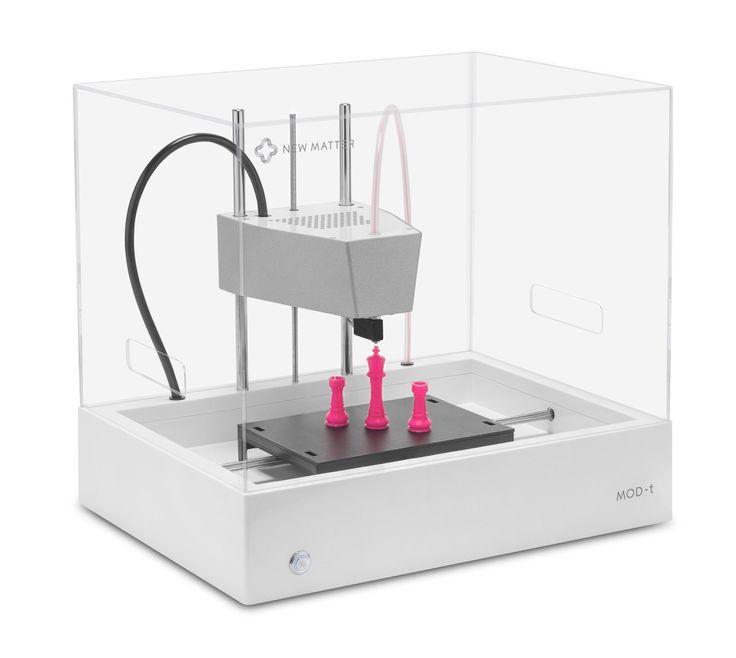 They vary according to their build volume, the 860Pro being the largest solution, with a build volume of 508 × 381 × 229 mm. You can find more information HERE.
They vary according to their build volume, the 860Pro being the largest solution, with a build volume of 508 × 381 × 229 mm. You can find more information HERE.
Binder Jetting
ComeTrue T10
Developed by Taiwanese manufacturer ComeTrue, the ComeTrue T10 3D printer is based on a Binder Jetting technology and coloured inks (CMYK). The advantage of such a process is the possibility of printing parts without printing supports as well as its speed, the T10 is indeed able to reach a printing speed of 20mm/h. The ComeTrue T10 allows the manufacture of parts with a maximum size of 200 x 160 x 150 mm with a resolution of 1200 x 556 DPI for a minimum layer height of 0.08 mm. The ComeTrue 3D printer requires a post-processing machine to remove the finished prints (Dry Vacuum Cleaner). The ComeTrue T10 is available for a price of about 25,000€. You can find more information HERE.
PartPro350 xBC from XYZprinting
Launched in 2018 by Chinese manufacturer XYZprinting, the PartPro350 xBC 3D printer uses Binder Jetting.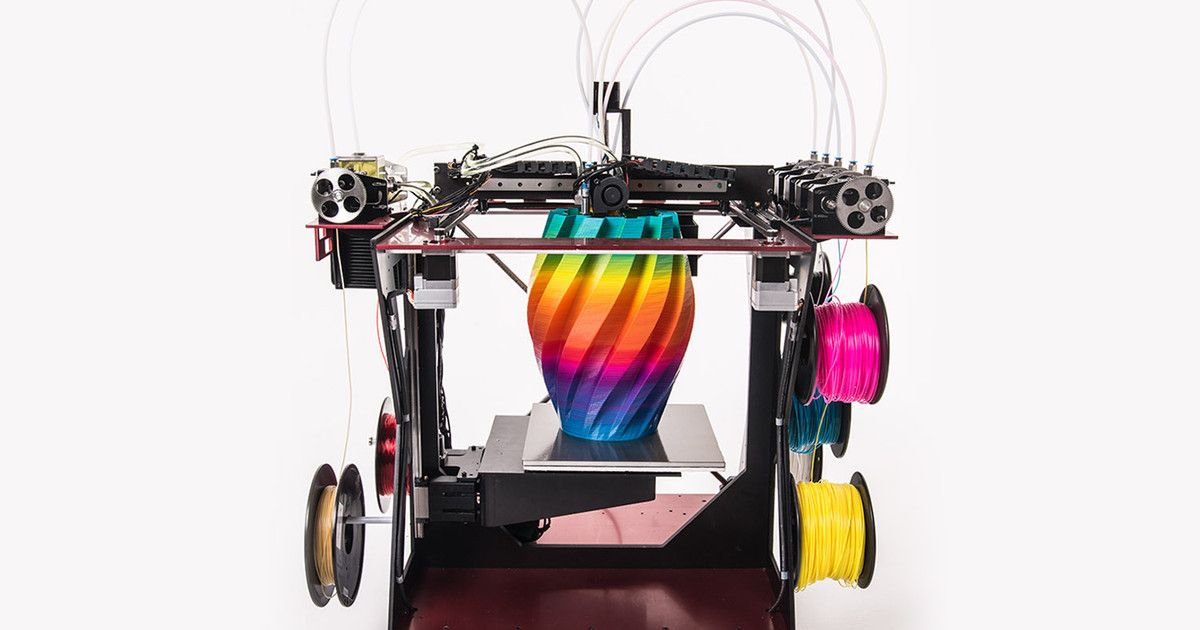 It is compatible with standard thermoplastics, such as ABS and PLA and the machine has been designed for professionals. With a printing volume of 350 x 222 x 200 mm, the printer is, according to the manufacturer, 150% faster than machines using the same technology. Finally, the PartPro350 xBC has a removable tray so that users can easily remove parts after the printing process. According to some retailers, the price is between €25,500 and €35,000.
It is compatible with standard thermoplastics, such as ABS and PLA and the machine has been designed for professionals. With a printing volume of 350 x 222 x 200 mm, the printer is, according to the manufacturer, 150% faster than machines using the same technology. Finally, the PartPro350 xBC has a removable tray so that users can easily remove parts after the printing process. According to some retailers, the price is between €25,500 and €35,000.
What did you think of our listing of full color 3D printers? Let us know in a comment below or on our Facebook and Twitter page! Don’t forget to sign up for our free weekly Newsletter, with all the latest news in 3D printing delivered straight to your inbox!
90,000 best 3D printers 2022 for production and business: Expert rating3D scanners
Analyst and business
The best on the topics
Experts recommend
3D printer
Author: Semen PopaDYADYUK
Author: Semen Popdyuk
Summing up the results of the outgoing year, we tried to choose the most interesting solutions that appeared in 2022 on the global 3D printing and 3D scanning market.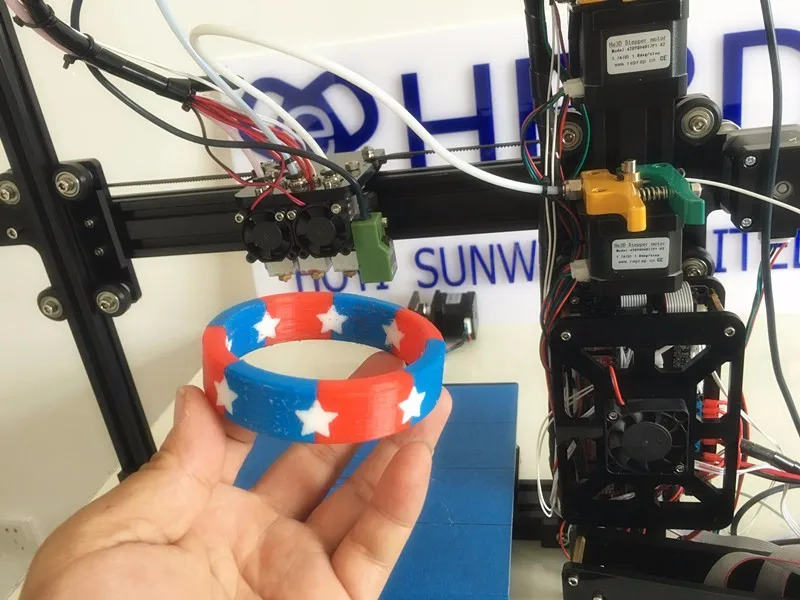 Of course, our top is far from covering even a small part of the novelties of the grandiose 3D industry. We have highlighted several developments that have attracted increased attention from users and professional industry experts.
Of course, our top is far from covering even a small part of the novelties of the grandiose 3D industry. We have highlighted several developments that have attracted increased attention from users and professional industry experts.
Note that the best 3D printers and 3D scanners of 2022 roundup does not include the home (consumer) segment. In accordance with the direction of the blog, we are considering professional and industrial equipment that will reduce time, material and labor costs for manufacturing enterprises, research, educational and medical organizations, as well as in the field of business projects. Thanks to such innovations, the locomotive of the industry is moving.
Blog materials will help you navigate the typology of equipment and choose the best solution:
-
Types of 3D printers: technologies, materials, applications
-
Choosing a 3D Printer: Find the Right Solution for You
-
How to choose a 3D scanner
If you have questions about the implementation of 3D technologies, please contact iQB Technologies experts
Top 8 3D printers
HBD E500
© HBD
HBD is one of the Chinese market leaders in metal 3D printing. The manufacturer's portfolio includes more than 15 models of printers with cameras from 150 to 1500 mm. In 2022, the line was replenished with perhaps the most versatile machine - the HBD E500. It's a true workhorse for trouble-free printing of complex custom or prototype designs up to 520mm.
The manufacturer's portfolio includes more than 15 models of printers with cameras from 150 to 1500 mm. In 2022, the line was replenished with perhaps the most versatile machine - the HBD E500. It's a true workhorse for trouble-free printing of complex custom or prototype designs up to 520mm.
The printer is equipped with two or three lasers, depending on customer requirements, equipped with a safe and reliable filtration system and provides a closed powder supply cycle. With its fast print speeds of up to 10,000 mm/s, the E500 is well suited for continuous batch production in a variety of industries such as automotive, machinery, aerospace, foundry, education and R&D.
SLM NXG XII 600E
© SLM Solutions
At Formnext 2022, SLM Solutions, the market leader in metal 3D printing, announced its latest development, the largest additive manufacturing machine for selective laser melting technology. Based on the popular NXG XII 600 model, the new model has a larger build area of 1. 5 m in the Z-axis, which is reportedly 50% larger than the equipment of the nearest competitor.
5 m in the Z-axis, which is reportedly 50% larger than the equipment of the nearest competitor.
Metal-to-metal additive manufacturing customers are demanding ever larger parts – and as quickly as possible. Serial production of products of complex geometry can now be implemented in a few hours or days, rather than weeks and months. To meet these expectations, the NXG XII 600E provides an end-to-end manufacturing process to increase machine uptime.
The system platform features an open SLM architecture that allows flexible process parameters for maximum performance at a layer thickness of 90 micron or more (when working with popular materials such as IN718, AlSi10Mg, TiAl6V4 and copper alloys).
IEMAI FAST JET 1500
© IEMAI
-
Technology: FDM/FGF
-
Construction area: 1500 × 1500 × 1500 mm
-
Features: creation of large objects from granulated thermoplastics and remote control of the printing process
The use of polymers in the form of granules in 3D printing makes it possible to save even more on materials and speed up the process of printing large-sized objects compared to filaments. Another well-known Chinese manufacturer, IEMAI, introduced the FAST JET 1500 large-format FGF printer for printing products up to 1.5 meters in length, width and height.
Another well-known Chinese manufacturer, IEMAI, introduced the FAST JET 1500 large-format FGF printer for printing products up to 1.5 meters in length, width and height.
The 3D printer features an elevated extrusion temperature (500°C), a 3-stage extrusion temperature control system, and a closed isolation chamber to handle most thermoplastic pellets available on the market, including PLA, nylon, and high-performance materials such as PEEK and PEKK. .
The FAST JET 1500 also features a proprietary 6-axis control system and a 10″ full color touch screen with remote automatic loading. In addition, the printer is one of the first models to be sold with a built-in IEMAI cloud platform for remote control of material drying, G‑od file uploads, printing at regular intervals, and remote monitoring of the printing process.
F2 Gigantry
© F2 Innovations
The Perm company F2 innovations, which develops and manufactures industrial 3D systems, has introduced a novelty - a granule printer with the largest print area.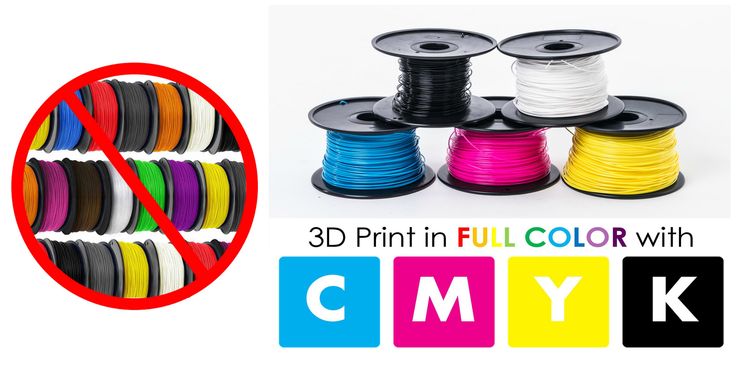
The F2 Gigantry is an open gantry with an extruder capable of creating parts up to 4 meters long, 2 meters wide and 1 meter high. The technology allows printing with polymer granules with a capacity of up to 10 kg/h, including recycled materials (recycled granulate).
FGF-printing technology is not new, but F2 Gigantry became the first domestic large-format 3D printer in this category. Today, the question of a quick and high-quality replacement of imported solutions, as well as the acceleration of production with an increase in the number of products, is acute. The novelty from F2 Innovations will help to solve these problems effectively.
ProtoFab PF‑S300 / PF‑S350
© ProtoFab
Professional Russian users are already familiar with SLA printers from the Chinese company ProtoFab, and this year the manufacturer introduced a series of high-precision industrial units based on selective laser sintering (SLS) technology.
ProtoFab PF‑S300 and PF‑S350 are equipped with a new dynamic thermal control system that further optimizes temperature distribution monitoring, encapsulation and sensor performance.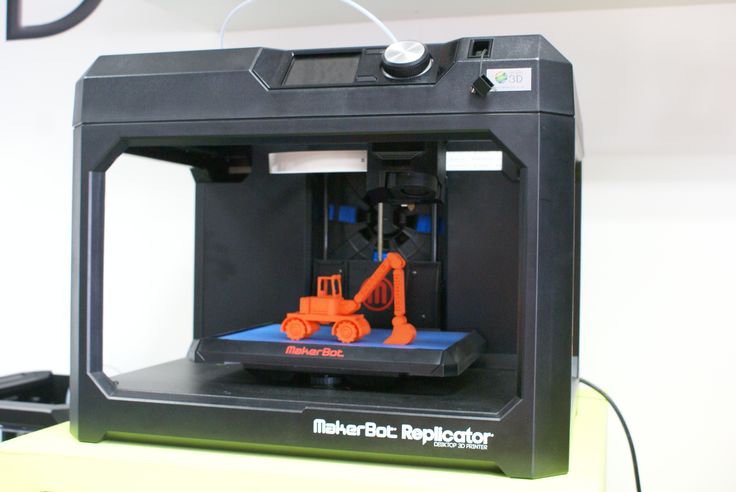 Nylon, carbon fiber composite nylon powder, fiberglass composite nylon powder and other plastics are used as consumables.
Nylon, carbon fiber composite nylon powder, fiberglass composite nylon powder and other plastics are used as consumables.
The speed of laser illumination is increased to 3 m/s, which significantly speeds up molding by increasing the speed of powder spraying. The printers are equipped with new, efficient powder removal accessories, which can reduce production costs and lead times. With a mold cylinder temperature of 220°C, the PF‑S300 and PF‑S350 are capable of sintering materials with a melting point of 225°C or lower.
Sinterit Lisa X
© Sinterit
The Polish company Sinterit sets another record: according to the manufacturer, the new SLS system is ten times faster than its predecessor, the Lisa PRO model. Lisa X is capable of sintering PA12 at speeds up to 14 mm/h and completing a full print session in just 30 hours. Relatively inexpensive and compact, a 3D printer can truly boast the performance of an industrial device and allow companies to speed up product development and time to market.
Open source software allows you to customize 32 print settings to suit your individual needs. Media changes can be done in 15 minutes, and printing and cooling can take up to 40% less time than any other compact SLS printer.
Lisa X also features a unique "airblade" system that automatically cleans the glass around the laser during production, meaning users don't have to do it manually in two out of every three sessions, speeding up print preparation.
Massivit 10000
©Massivit 3D
-
Technology: Cast-In-Motion
-
Construction area: 1200 × 1500 × 1650 mm
-
Features: production of molding equipment in the shortest possible time
Another interesting novelty for 2022 is a large-format additive machine from the reputable Israeli manufacturer Massivit 3D. The system uses a hybrid technology of photopolymer 3D printing and thermoplastic injection, called "Cast-In-Motion" (CIM). The printer is designed for the production of molding equipment for the subsequent manufacture of products from composite materials. Two printheads are used respectively to form the photopolymer gel formwork and to fill the internal cavities with thermoplastic. After heat treatment of the printed product, the photopolymer shell dissolves, and the resulting form undergoes finishing machining.
The printer is designed for the production of molding equipment for the subsequent manufacture of products from composite materials. Two printheads are used respectively to form the photopolymer gel formwork and to fill the internal cavities with thermoplastic. After heat treatment of the printed product, the photopolymer shell dissolves, and the resulting form undergoes finishing machining.
This technology, according to the manufacturer, allows to reduce the number of stages of the production process and reduce the time for the manufacture of molding equipment by 80%.
BMF microArch S350
© Boston Micro Fabrication
-
Technology: projection microstereolithography (PµSL)
-
Construction area: 100 × 100 × 50 mm
-
Features: high resolution microscale photopolymer printing
And here is one of the latest new products for 2022 - a photopolymer microprinting machine from Boston Micro Fabrication (BMF). The microArch S350 is the highest performing BMF printer for the final part industry, as it can print not only high-resolution micro-scale objects (up to 10 microns), but also many small objects that require high precision and detail. The 3D printer is suitable for prototyping and additive manufacturing in the amount of one thousand to 30 thousand products and will find its place in enterprises and research laboratories.
The microArch S350 is the highest performing BMF printer for the final part industry, as it can print not only high-resolution micro-scale objects (up to 10 microns), but also many small objects that require high precision and detail. The 3D printer is suitable for prototyping and additive manufacturing in the amount of one thousand to 30 thousand products and will find its place in enterprises and research laboratories.
The microArch S350 is based on BMF's projection microstereolithography (PµSL) technology, which is a form of masked stereolithography (MSLA) using ultraviolet light with microscale resolution.
Top 5 3D Scanners
FARO Focus Premium
© FARO
-
Type: ground laser 3D scanner
-
Distance measurement accuracy: ±1mm
-
Scanning speed: up to 2 million points per second
-
Features: Unsurpassed scanning quality in one minute
The super-hit FARO Focus series has been replenished with improved Premium models.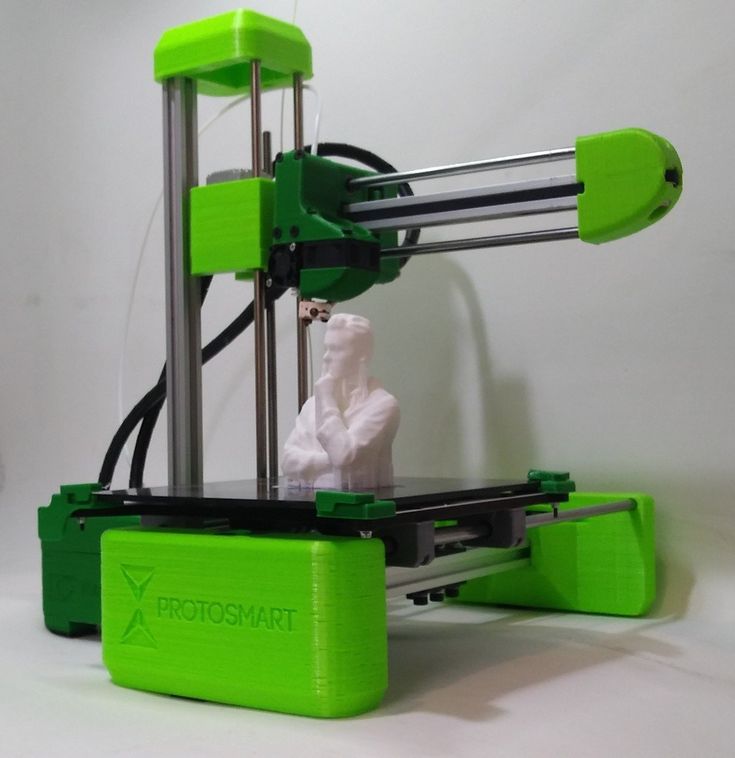 The new line includes three instruments with a scanning range of 70, 150 and 350 meters and features higher speed, increased resolution, hardware noise reduction and the ability to remotely control the instrument from any mobile device.
The new line includes three instruments with a scanning range of 70, 150 and 350 meters and features higher speed, increased resolution, hardware noise reduction and the ability to remotely control the instrument from any mobile device.
Premium is 50% more productive than its predecessors: measurements take an average of one minute using the optional PanoCam, even when scanning in color. Remote control of the scanner and stitching of scans from a mobile device is performed using the Stream application with subsequent integration into the Sphere cloud platform.
New devices are perfect for projects in the field of manufacturing, architecture, civil and industrial construction. And a nice bonus: the official warranty period from the manufacturer has been extended to two years.
Also in 2022, FARO launched the Focus Core, a cost-effective terrestrial scanning solution with an optimal balance of speed and accuracy.
EPiC EasyScan T10
© EPiC
-
Type: terrestrial 3D laser scanner
-
Accuracy: 1cm at 10m, 2cm at 30m, 5cm at 100m
-
Scanning speed: 320 thousand points per second
-
Features: Easy-to-use entry-level device
The appearance of such devices marks a new milestone in the evolution of laser scanning technology, which optimally combines economy, quality and ease of use. The EasyScan T10 from China's EPiC (Wuhan Eleph‑Print Tech Co, Ltd.) will be in demand when processing time and measurement convenience are more important than obtaining high-precision data. The scanner is equipped with a 360 °C panoramic camera, and the signal emission system and sensors are securely and ergonomically integrated into the body.
The EasyScan T10 from China's EPiC (Wuhan Eleph‑Print Tech Co, Ltd.) will be in demand when processing time and measurement convenience are more important than obtaining high-precision data. The scanner is equipped with a 360 °C panoramic camera, and the signal emission system and sensors are securely and ergonomically integrated into the body.
The scanner is launched with one button. A dual scan mode is available, which allows you to combine the simultaneous operation of a panoramic camera and lidar. Data stitching is done on a mobile device. Weighing only 3.2 kilograms, the instrument is one of the lightest geodetic scanners on the market. The package includes everything you need for scanning, including a tripod, batteries and free software for data processing.
Artec Leo 2022
© Artec 3D
-
Type: Handheld Structured Illumination 3D Scanner
-
Accuracy: up to 0.1 mm
-
Scanning speed: up to 35 million points per second
-
Features: The legendary Leo - with double the power and even more accuracy
In the past year, Artec 3D introduced a new version of its popular Leo system, released in 2018.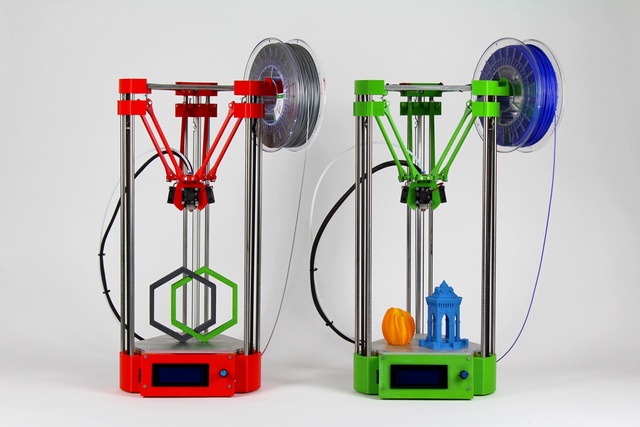 The Artec Leo 2022 Wireless Handheld 3D Scanner offers twice the processing power, improved capture of vibrant colors, an updated built-in touch screen, a multilingual interface, and guaranteed high accuracy. The new Auto Temperature Control feature allows the scanner to regulate its operation and maintain the optimal operating temperature of the components.
The Artec Leo 2022 Wireless Handheld 3D Scanner offers twice the processing power, improved capture of vibrant colors, an updated built-in touch screen, a multilingual interface, and guaranteed high accuracy. The new Auto Temperature Control feature allows the scanner to regulate its operation and maintain the optimal operating temperature of the components.
Powered by an updated NVIDIA Jetson TX2 processor, power consumption is reduced to less than 7.5W. The capture area is 160,000 cm 3 , meaning the Leo 2022 can scan objects larger than 200 cm, from car parts to people and rooms.
peel 3d peel 3
© Peel 3d
-
Type: Handheld Structured Illumination 3D Scanner
-
Accuracy: 0.250 mm/m, up to 0.1 mm
-
Scan speed: 80 sec/m 2
-
Features: A new generation of affordable scanners for reverse engineering
peel 3d, a subsidiary of Creaform, has released a completely redesigned peel 3 solution. This scanner boasts not only higher accuracy than the brand's previous models, but also improved usability thanks to its ergonomic design, tactile feedback and intuitive touch screen capabilities. All of these improvements aim to improve the scanning experience for both novice and advanced users. Applications of the 3D scanner cover product development, cultural preservation, AR/VR, healthcare, auto tuning, parts manufacturing, engineering, and more.
The scanner is also offered with peel 3.CAD proprietary software, which has been specifically designed as a complete reverse engineering solution.
Scantech SIMSCAN
© Scantech
-
Type: Handheld 3D Laser Scanner
-
Accuracy: up to 0.2 mm
-
Scanning speed: up to 2.8M points per second
-
Features: compact and high performance device for professional use
Scantech (China) has released an updated version of the compact and portable SIMSCAN 3D scanner. It aims to set a new standard in metrology with palm-sized, high scanning performance, low power consumption and 0.020mm accuracy.
Scantech engineers have been able to improve 3D scanning efficiency by 40% and reduce power consumption by 20% compared to the previous version. Thanks to its blue laser scanning technology, the device is ideal for digitizing narrow spaces. 42 laser lines further enhance scanning efficiency.
The device is designed for long-term and stable use. To ensure reliability, the 3D scanner calibration plate is made of aerospace grade carbon fiber, which is more resistant to shock and other loads. Finally, SIMSCAN is extremely portable, allowing you to carry it with you and take measurements anywhere.
Article published on 12/22/2022, updated on 01/31/2023
Best 3D printers for kids
This article will help you choose the best 3D printer for your child. The criterion that was used to determine these 3D printers is the age of the children. The printers discussed below will provide you with the opportunity to introduce your children to 3D printing and possibly further interest them in engineering or a similar field.
Introducing children to 3D printers from an early age gives them hands-on experience in making models to scale. Your kids will love creating their own models and watching them take shape right before their eyes.
Below are only the best 3D printers based on both objective and subjective criteria, the final choice is up to you, but we will provide you with as much useful information as possible.
Is your child ready for a 3D printer?
If you have already mastered the technology of 3D printing, then you have probably noticed that this is no longer something from the future. It's already here. 3D printing is useful for everyday use, from smartphones to cars, jewelry to medicine and more.
Kids need to be early on about 3D printing technology. And with the 3D printers below, your kids will not only learn the theory, but also get hands-on physical experience in 3D printing.
Price should not influence your decision when buying a 3D printer for a child. Instead, think about the benefits your kids will have in terms of hands-on experience using it.
3D printer develops creative thinking
With 3D printing, you can get a small physical 3D model of plastic or other material in just a couple of hours. This technology not only speeds up simulation, but also significantly reduces the tedious development cycle of product development, design, production, testing, and product improvement.
For children who want to make a career as an engineer, a 3D printer will definitely help in their development. A 3D printer will give your child the hands-on physical experience of making their own products. This is what engineers live for.
Coming up with a design and having it in your hands in a few hours is a very exciting process. It can also be a good way to show your kids that engineering is fun.
The future of manufacturing is 3D printing
The adoption of new technologies in schools is relatively slow. This is usually due to the fact that schools do not receive sufficient funding and must follow the existing curriculum. Do not be surprised to learn that schools are still teaching children what they taught more than 10 years ago.
If your children are lucky, they may be taught metalwork or woodwork anywhere from elementary to high school. Even though they are learning these skills, it is very unlikely that they will touch a 3D printer. If the institution has a 3D printer, it may not be the latest model.
3D printers have changed a lot in the last 10 years. Today, printers have become much more affordable, and the choice and competition are quite high.
3D printer XYZPrinting Da Vinci miniMaker
First Impressions of the XYZprinting DaVinci miniMaker
The XYZprinting DaVinci miniMaker is sure to please. Not only that, the bright appearance of this 3D printer will also impress your child. Instead of seeing a boring gray box, the first impression will be like a new toy.
The similar Da Vinci Mini is more orange and will cost about $30 more. However, it does have Wi-Fi.
The build quality of the DaVinci miniMaker is excellent. It is a rugged and reliable 3D printer with compact dimensions (15.75 x 13.23 x 14.25 inches).
Specification XYZprinting DaVinci miniMaker
Age group: 14+ (8+ with adult supervision). An adult will need to unpack it, set it up, remove the pre-assembled parts, and clean the 3D printer after each use.
- Price range: Budget
- Material type: PLA (non-toxic)
- Resolution: 1 mm - 0.4 mm
- Workspace: 9 x 5.9 x 5.9 inches
DaVinciMaker miniMaking Software XYZprint4
MiniMaker does not use the industry standard G-code. Instead, it uses the included XYZware software. This is the limiting factor for young hungry minds. However, the 3D printer is guaranteed to work immediately after purchase.
The XYZware software is a fairly simple program. However, there are problems in terms of feedback. For example, there will be no expected error warnings, etc.
XYZ MiniMaker Kids 3D printer displays useful information. For example, there is information about how much material the 3D model will use and how long it will take to print. Children usually lose patience when they have to wait a long time. So it's great that this 3D printer gives an estimated production time.
The program does a great job of automatically preparing your 3D models for production. Unfortunately, there are limitations in terms of adding support materials in case of complex 3D models, so that the child will not be able to master this area of 3D printing.
XYZprinting DaVinci miniMaker setup and print quality
DaVinci miniMaker is easy to set up. All you have to do is plug in the USB cable and power cable, install the printhead, feed in the 3D printing material, and you're done. Calibration is not required.
This 3D printer comes with setup instructions that are a little vague at times. However, you won't have any problems setting it up, even if you're seeing a 3D printer for the first time.
XYZprinting DaVinci miniMaker 3D printing process
There are several models in the XYZ program that can be used for 3D proofing. If you need more models, I suggest you check out Thingiverse. Or, for example, you can download Pokemon characters and print their models.
The level of detail you get with DaVinci miniMaker 3D printing is commendable given how cheap this device is.
MiniMaker runs quietly. That's impressive considering it's an open design model.
Disadvantages of XYZprinting DaVinci miniMaker
The biggest disadvantage of the miniMaker 3D printer is that only the exclusive XYZ filament can be used with it. The problem is that filament is more expensive than conventional brands available on the market. The manufacturer of this 3D printer probably doesn't want entry-level users to put the wrong filament in the printer. Therefore, only one type of media is used in printers. Inside this 3D printer there is a chip that checks the markers on the material. By checking, he can find out how much material was used up. Therefore, if you insert a different brand of media, the printer will indicate that there is no media and therefore it simply will not work. The only way to get this 3D printer to use a different material is probably to change the main board. So keep that in mind when you're shopping for this 3D printer.
However, the inability to use other manufacturers' filaments should not deter you from buying a DaVinci miniMaker, as the filament spool can last quite a while. In addition, the 3D print quality of this printer is exceptionally high.
XYZprinting Conclusions DaVinci miniMaker
The XYZ miniMaker is a great 3D printer for young children and non-technical parents. Finished 3D models are very highly detailed and of excellent quality.
However, the simplicity of this printer can be a disadvantage because your children can outgrow it quite quickly, especially when they reach their teens. In addition, this 3D printer will not be able to 3D print more complex models.
If you are interested in a 3D printer, you can check out an alternative review of the DaVinci miniMaker, in which it is considered not in the context of a device for children, but as a full-fledged 3D printer.
Monoprice Select Mini 9 3D printer0043
First Impressions of the Monoprice Select Mini
The Monoprice Select Mini V2 is a very durable 3D printer. The steel construction of this printer is quite simple, but it looks reliable and there can be absolutely no complaints about it.
Important parts of the 3D printer are well sealed to avoid damage or injury during use. This 3D printer gives the impression that it should be operated by a white-coated lab technician.
Enthusiastic teens will love this 3D printer with a full color display. Although the display is not touch-sensitive, there is a thin control wheel next to it on a fancy polished steel plate.
The great news is that you can use PLA plastic from any manufacturer to print on this 3D printer.
Specifications Monoprice Select Mini
- Age Group: 14+
- Price Range: Budget
- Material Type: ABS, PLA, XT Copolyester, PET, TPU, TPC, FPE, PVA, HIPS, Jelly, Foam, Felty
- Resolution: 1 mm
- Working space: 7 x 4.7 x 4.7 inches
Monoprice Select Mini 9 software0045
Monoprice recommends using Simplify3D, Replicator-G, Repetier or Cura software. All of these slicers are 3D printer compatible. Cura is the recommended software for Monoprice. One of the benefits of using third party software is that they have advanced settings and more options for preparing a 3D model. All of the programs listed above are also used with professional 3D printers.
Monoprice Select Mini 9 setup and print quality0045
Monoprice Select Mini V2 does not come with installation instructions. However, you can download instructions from the Monoprice website.
This 3D printer comes with some default settings. However, it is worth figuring out and tweaking these settings.
The material feed to the printer is not very well implemented and can cause problems, but in general these are tolerable little things that you will encounter in most 3D printers.
3D printing process on Monoprice Select Mini
The Monoprice 3D printer is quite loud compared to other 3D printers in this review. Moreover, it has the ability to use an SD card.
My 3D test model printed quickly and without problems. The quality of the model was excellent. However, test model settings can be optimized. The speed of 3D printing was also low, since the resolution in the Z coordinate was set to high. But this is the expected price that you have to pay for high-quality 3D printing. These shortcomings are corrected by the correct settings in the slicing program, as well as on any other 3D printer, so it's hard to say that this is a shortcoming. And the many options for print settings on the Select Mini will let your child (and probably you) learn even more about the 3D printing process.
Disadvantages of Monoprice Select Mini
Although Monoprice claims that you can use ABS plastic for 3D printing, you will definitely run into problems when using this material. This is because ABS requires a table temperature of 220°F while Monoprice's maximum table temperature is around 140°F. If you want to use ABS to build your models, consider buying another printer. However, before thinking about using ABS plastic in principle, read the information about its toxicity and only then make a decision. Especially considering that a child will use this 3D printer. At the same time, it is worth noting that the quality of your PLA plastic products will be good, so this disadvantage should not play a decisive role in your choice of a 3D printer for a child.
Monoprice Select Mini Conclusions
Basically, if you're looking for the ultimate 3D printer for teenagers, the Monoprice Select Mini V2 is the perfect buy at an affordable price.
The disadvantages of this 3D printer can be overlooked, especially if you just want to buy your kids their very first 3D printer.
If you are interested in a 3D printer, you can check out an alternative review of the Monoprice Select Mini, which does not consider it in the context of a device for children, but as a full-fledged 3D printer.
Flashforge Finder 3D Printer
FlashForge Finder First Impressions
Unlike the other 3D printers for kids featured in this review, the FlashForge Finder 3D printer is more suitable for home 3D printing or an ordinary apartment environment. This model matches perfectly with all your other gadgets.
The front of the machine has a nice, clear, full color touchscreen display. In general, the 3D printer looks bright and at the same time concise and fits perfectly into a discreet but thoughtful interior.
FlashForge Finder Specifications
- Age Group: 11+
- Price Range: Budget
- Material Type: PLA
- Resolution: 0.
8 - 0.4mm
- Working Space: 5 x 0.5 x 5.5
FlashForge Finder Software
FlashForge Finder uses FlashPrint software to slice 3D models. The software allows you to fully automate the slicing, the support generator for complex 3D models works well. In manual options, you can change the temperature and speed of 3D printing for kids who want to take their part design to the next level. Standard features such as the amount of material used are also included in the software.
When you use the manual setting, you will notice that the FlashPrint software is more advanced than the XYZware that comes with DaVinci miniMaker. The software also has several advanced options, such as 2D to 3D, which allow you to create an approximate 3D model from a 2D image. For example, you can use the settings to turn a face into a 3D model and print it out.
FlashForge Finder 3D Printing Process
FlashForge Finder comes with a USB stick containing a user manual. When you turn on your 3D printer for the first time, the touch screen will guide you through the initial print bed calibration. You will see instructions on how to fasten the adjusting nuts and adjust them to the desired height. The guide is user-friendly and makes setup that would otherwise be frustrating for a novice as simple and straightforward as possible.
Feeding material to the 3D printer again can cause problems. You will need to apply some force to pull the filament through the extruder. You will definitely not succeed the first time, but it is a solvable task.
With this 3D printer, you can easily print almost any 3D model. The printer heats up quickly and is relatively quiet.
Frustration with this 3D printer is low; very close to zero according to consumer reviews, even after a few weeks of use.
FlashForge Finder Disadvantages
Although the FlashForge Finder 3D printer can be used with a variety of PLA filaments, the onboard filament container is slightly smaller than a standard 3D printer. So if you are using other brands of PLA, keep the spool away from the printer, such as on or right above a bookshelf.
FlashForge Finder Conclusions
The FlashForge Finder 3D printer is a couple of years ahead of its time. Surely in a few years this 3D printer will be available in any store, just like you do now with 2D printers.
The 3D printer is quite simple and given the manufacturer's warranty, this is the perfect option if you need to introduce your family to the world of 3D printing.
Sindoh 3DWOX DP200 3D Printer
Sindoh 3DWOX DP200 First Impressions
The Sindoh 3DWOX DP200 3D Printer looks more like home appliances than a 3D printer. The printer looks like an innovative microwave oven with a transparent front opening.
Media and print engine are inside the printer. The plastic parts inside the printer are solid to the touch, so the workmanship is clearly at a high level.
Since the material for 3D printing is inside the 3D printer itself, it is slightly larger in size than its counterparts. However, the printer's cubic shape makes it easy to install, unlike other open design 3D printers that require space to access removable covers and material.
DP200 is a large printer. 8.3 x 7.9 x 7.3 is one of the largest models in the home 3D printer market. If you are looking for a large 3D printer for kids, then Sindoh 3DWOX DP200 is your best choice.
Specifications Sindoh 3DWOX DP200
- Age group: 13+
- Price range: Expensive
- Material type: ABS, PLA 4 inches
Sindoh 3DWOX DP200 software
Sindoh 3DWOX DP200 comes with its own 3DWOX Desktop software for slicing 3D models. The software has two modes: advanced and simple, and also provides adequate control when preparing a file for 3D printing.
Simple mode has an intuitive interface and in most cases allows you to get reliable and high-quality 3D models.
When you get comfortable with this 3D printer, you can switch to advanced mode and start experimenting with settings to improve the preparation of files for 3D printing and the quality of your 3D models.
Setup and print quality Sindoh 3DWOX DP200
Sindoh 3DWOX DP200 is delivered already assembled. All you have to do is plug it in, add some material and calibrate the table to start printing. When you turn on the printer for the first time, the color display will guide you through the calibration process.
One advantage of the DP200 printer is that you can insert a filament cartridge into it just like you would with a regular desktop printer. The media container system that the printer uses makes changing media much easier.
Sindoh 3DWOX DP200 3D printing process
After you have sent the file to the Sindoh 3DWOX printer, press the 'Start' button to make the machine start creating your model. If you have other things to do, you can step away from the printer and continue to monitor the printing process through the printer's built-in webcam.0003
Once your 3D model is printed, it is easy to take it out of the printer thanks to the flexible table.
Disadvantages of Sindoh 3DWOX DP200
The 3D printer DP200 only works with Sindoh filaments. So your 3B models will be limited by materials and colors. The good news is that Sindoh filaments are of high quality. Moreover, they are affordable.
DP200 can print with ABS. Therefore, you should consider ventilation as the fumes are toxic to some extent. Make sure the room where your 3D models will be printed is well ventilated.
Conclusions on Sindoh 3DWOX DP200
If you don't mind spending money on a 3D printer for a child, then this printer will suit you. This machine produces high-quality 3D models, and its design is simple and concise. The installation and process of 3D printing will also not cause difficulties.
If your kids have experience with 3D printers or want to learn a little more about them, then definitely buy them this 3D printer, which can give them the joy of implementing their ideas with a minimum of time spent on 3D printer maintenance.


